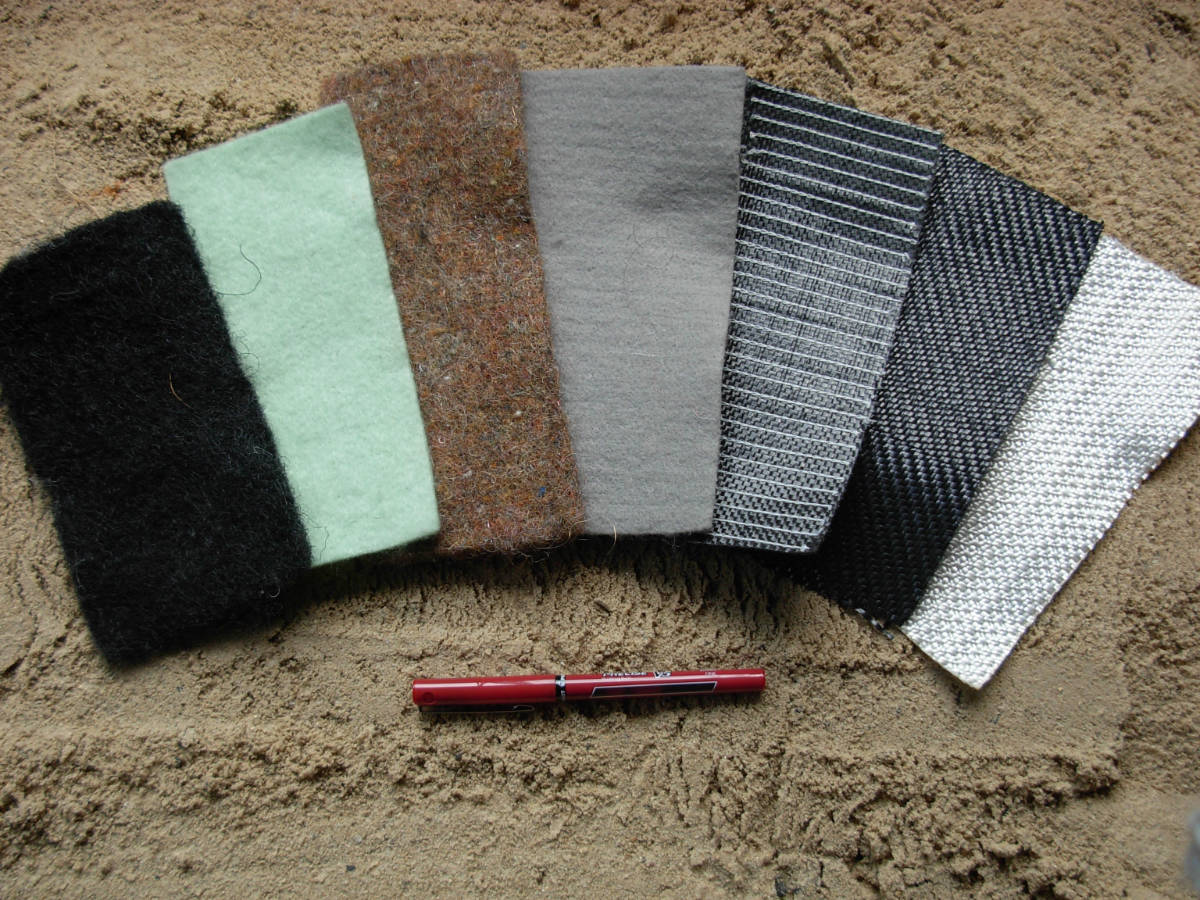Geotextiles in Landscaping

Geotextiles are fabrics that are used underneath roads and stonework. Their purpose is soil separation, weed control, erosion control and drainage improvement. Some are woven, similar to a heavy-duty canvas material and some are non-woven, more like felt.
The Early Days in Civil Engineering
Geotextiles made their debut in the early 20th century, primarily crafted from natural fibers like jute. Their initial use was in civil engineering, especially for soil erosion control in coastal and riverbank areas. This was the first major application of using fabric for soil stability.
The Shift to Synthetic Geotextiles
The 1970s and 1980s marked a significant shift with the introduction of synthetic materials such as polypropylene and polyester. This advancement expanded the scope of geotextiles beyond basic erosion control to more complex civil engineering applications, including road construction and retaining structures.
Transition into Landscaping
As geotextiles evolved, so did their applications, extending into the realm of landscaping. In this context, geotextiles serve several key purposes:
- Soil Separation: They act as a barrier between different soil types or between soil and other materials, maintaining the integrity of landscaped areas and preventing intermixing. This is the function most relevant to us as patio builders. Once the excavation is complete, we install a geotextile to separate the clay sub-soil from the compacted crushed stone patio base. The geotextile prevents the mixing of these two layers, strengthening and extending the life of the patio.
- Weed Control: Geotextiles help in suppressing weed growth, reducing the need for herbicides, and thus contributing to a more environmentally friendly landscape.
- Soil Erosion Control: Just as in their early use in civil engineering, geotextiles are effective in preventing soil erosion in landscaped areas, particularly on slopes and in areas prone to water runoff.
- Drainage Improvement: They enhance drainage in soil, preventing waterlogging in gardens, which is crucial for plant health and landscape maintenance.
Conclusion
Geotextiles have come a long way from their origins in civil engineering to become a fundamental component in landscaping. Their ability to separate, control weeds, prevent erosion, and improve drainage makes them invaluable in creating and maintaining healthy, aesthetically pleasing outdoor spaces. Geotextiles represent a perfect example of how functional materials can be adapted to meet the needs of both engineering and environmental stewardship in the landscaping world.



